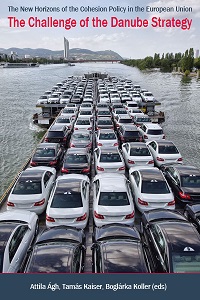Danube Strategy and Europe 2020 Strategy: The organic link between the bottom-up and the top-down EU projekts
Danube Strategy and Europe 2020 Strategy: The organic link between the bottom-up and the top-down EU projekts
Author(s): Attila Ágh
Subject(s): Economic policy
Published by: Kossuth Kiadó Zt.
Summary/Abstract: The “cohesion challenge” has been present from the very beginning in “the diverse Europe”. The historical evolution of regional policy indicates that it has finally widened into a comprehensive cohesion policy within the EU. Thus, there has been a long history in the EU vocabulary from “regional” policy to “cohesion” policy in both practicalstructural and conceptual-theoretical dimensions. But the main function of the regional/ cohesion policy has always been to “reduce socio-economic disparities and promote real convergence in the European Union by investing in structural change”. By now cohesion policy has turned to be the key policy field in the EU27 and regional policy has been treated as its special application. All in all, regional/ cohesion policy is meant for merging the competitiveness and cohesion together in a common public policy with a territorial perspective or territorial development strategy. The cohesion challenge has also appeared from the very beginning in the special form of “territorial challenge”. Territorial challenge means that the particular (idiosyncratic) development of all territorial units has to be optimalized within the EU general development according to their different territorial potentials. This process can be described as turning the special territorial capital into an increased social capital.
Book: The New Horizons of the Cohesion Policy in the European Union: The Challenge of the Danube Strategy
- Page Range: 10-54
- Page Count: 45
- Publication Year: 2011
- Language: English
- Content File-PDF

